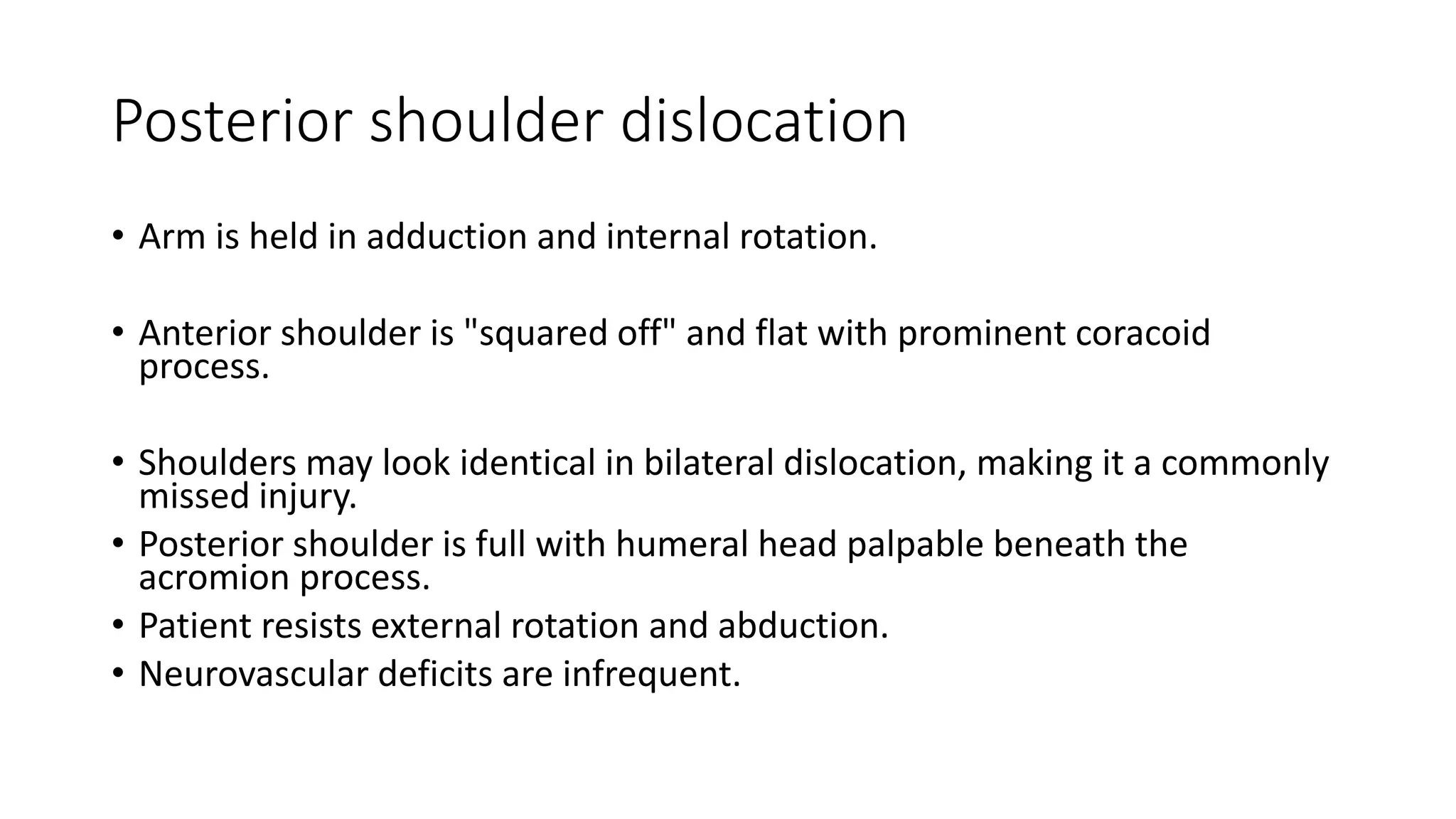A shoulder dislocation occurs when the humerus separates from the scapula at the glenohumeral joint. The most common type is an anterior dislocation, which can be reduced using techniques like external rotation or traction-countertraction. Complications of shoulder dislocation include recurrent dislocations, fractures, soft tissue injuries like Hill-Sachs or Bankart lesions, and nerve or vascular injuries. Careful examination is needed before and after reduction to identify any associated injuries.










![Shoulder trauma series[7] - Anteroposterior (AP) and axillary or scapular "Y" views:
• Anterior dislocation is characterized by subcoracoid position of the humeral head in the AP view. The
dislocation is often more obvious in a scapular "Y" view, where the humeral head lies anterior to the "Y." In
an axillary view, the "golf ball" (ie, humeral head) is said to have fallen anterior to the "tee" (ie, glenoid).
• In posterior dislocation, the AP view may show a normal walking stick contour of the humeral head, or it
may resemble a light bulb or ice cream cone, depending upon the degree of rotation. The scapular "Y" view
reveals the humeral head behind the glenoid (the center of the "Y"). In an axillary view, the "golf ball" falls
posteriorly off the "tee." [8, 9]
• In inferior dislocation (luxatio erecta), the AP view may show the arm raised over the head with the radial
head inferior to the glenoid.
Pre-reduction films
• These are commonly performed to document the nature of the dislocation and to establish the existence of
any associated pathology, such as a Hill-Sachs lesion or other humeral fractures.
• In cases where patients have experienced repeated anterior dislocations, prereduction films may not be
necessary prior to attempts at reduction. [10]
Post-reduction films:
• These confirm relocation of the humerus and may reveal new or previously obscured pathology.
Postreduction immobilization is imperative.](https://image.slidesharecdn.com/shoulderdislocation-150810042227-lva1-app6892/75/Shoulder-dislocation-11-2048.jpg)



